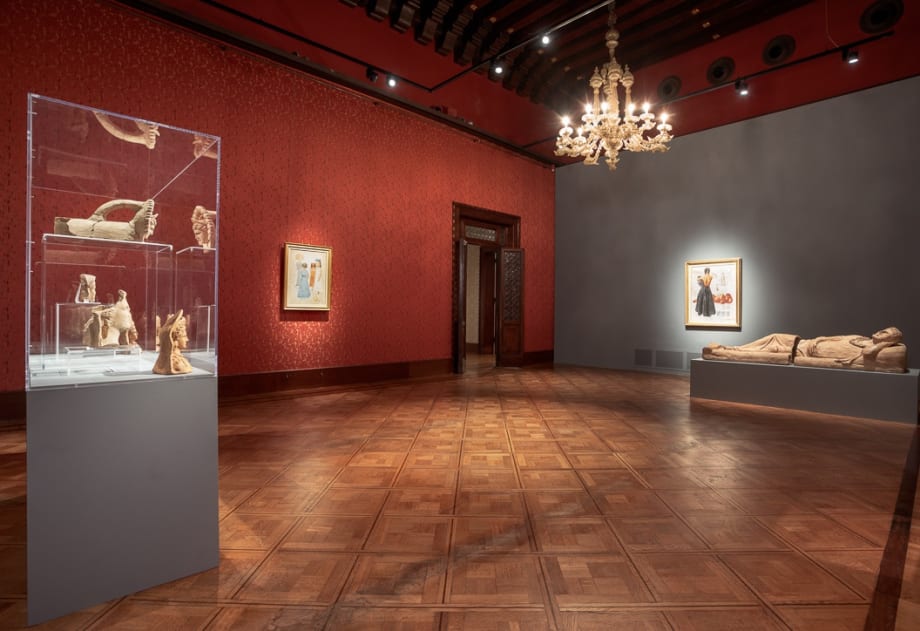«What influenced me for the longest time was Etruscan art, which was a turning point for my painting in 1928. [...] I loved that little, smiling humanity that makes one smile. I envied the blissfull sleep of these other terracotta adalisques on their sarcophagi, and their way of being dead. A pagan happiness entered in my paintings, both in the spirit of the subjects and in the spirit of the work, which became more free and lyrical».
It is with these words that Massimo Campigli himself describes, in his biography, his visit to the Etruscan Museum of Villa Giulia in Rome in 1928, giving it a fundamental value for the development of the mature phase of his artistic production. And it is from these words that the exhibition at ACP - Palazzo Franchetti in Venice, curated by Franco Calarota with the general supervision of Alessia Calarota, takes shape, offering a dialogue between the master's artworks and the examples of the past from which he drew such a strong inspiration. The nearly 35 works by Campigli selected for the exhibition are placed alongside about fifty archaeological finds from the Etruscan civilization, most of them undisclosed and here exposed for the first time, identified by the Superintendent Margherita Eichberg together with a Scientific Committee supported by the research director Arch. Giovanni Cesarini. The exhibition can also count on the precious scientific support of art historian Martina Corgnati.
The deliberately archaic compositions realized by Campigli, well represented in the exhibition with paintings ranging from 1928 to 1966, rediscover the origin of their deeper inspiration in the displayed Etruscan finds, establishing with them a natural sharing of atmospheres, signs and colours.
